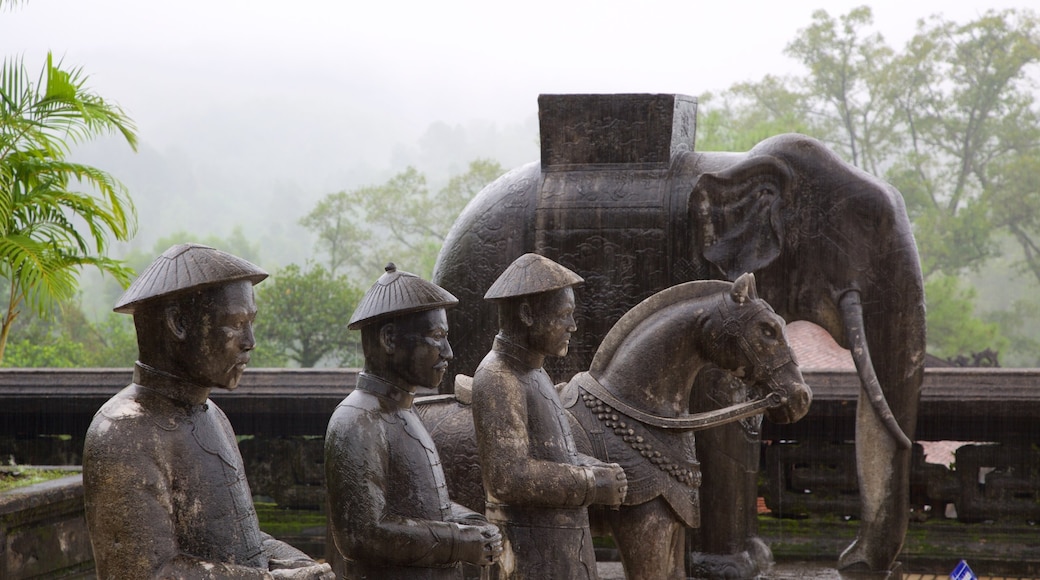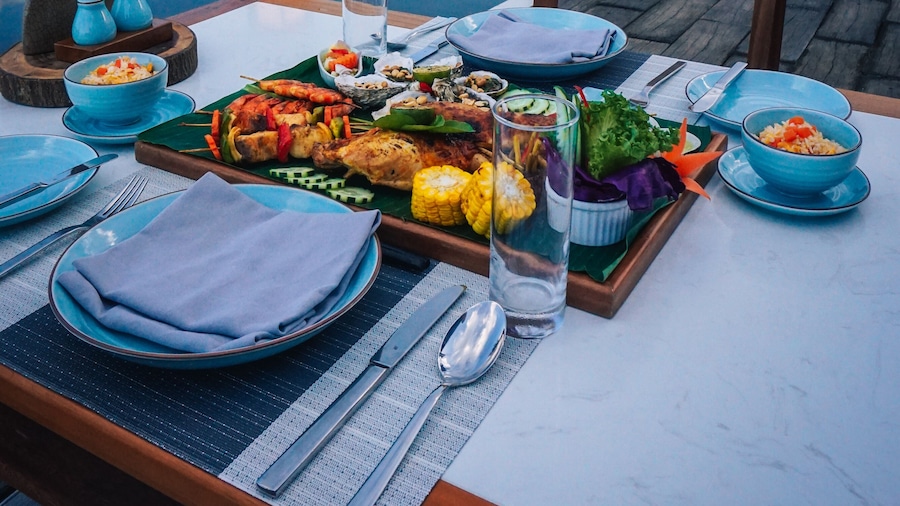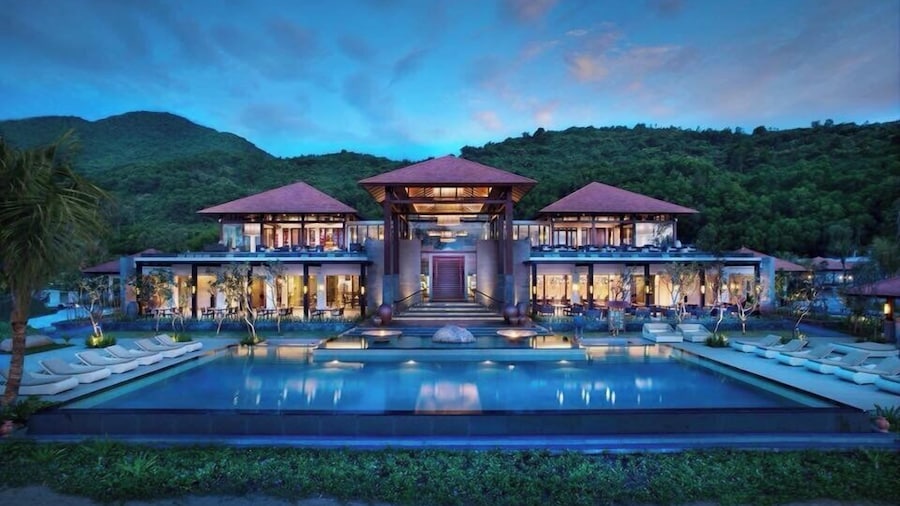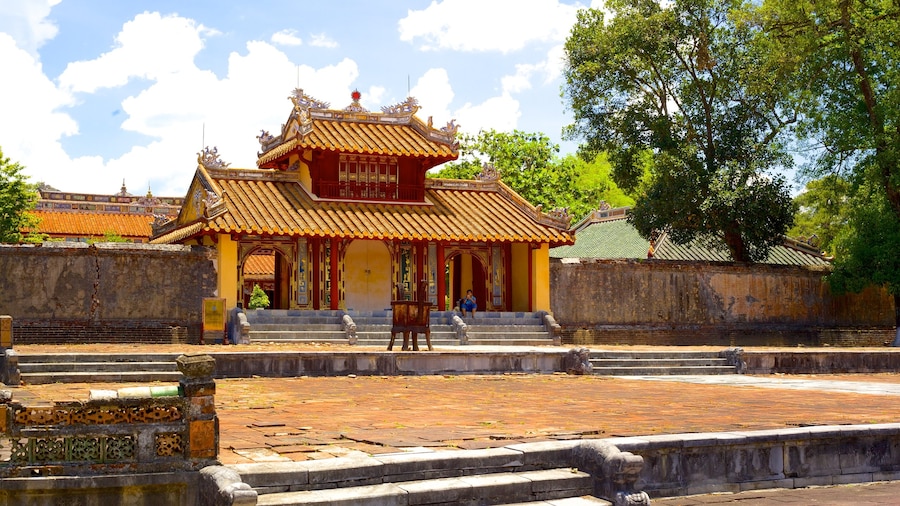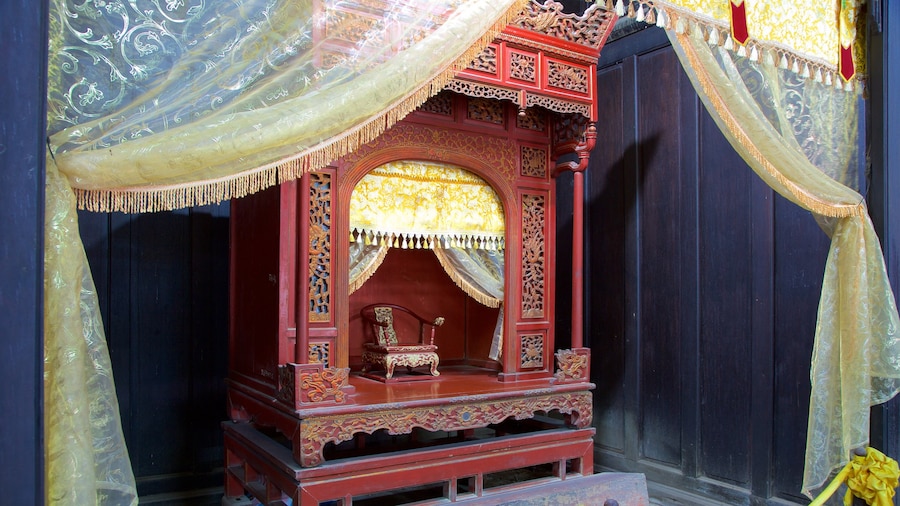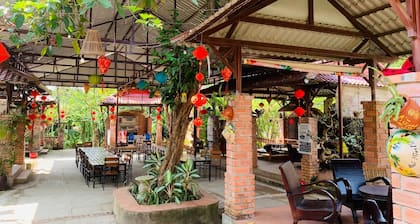Walk through the Honor Courtyard of the Tomb of Khai Dinh and feel the cold stares of stone mandarin guards on the back of your head. Head to the main room to view the statue of the infamous emperor below a ceiling of shimmering stained glass.
Khai Dinh was Vietnam’s penultimate emperor, reigning from 1916 to 1925. Although remembered by some as a pawn for the colonizing French who had little interest in the wellbeing of his people, his tomb remains far more spectacular than many of his predecessors. This is largely due to the fact that he mercilessly raised taxes to pay for its construction. Step inside to appreciate the impressive results of his demands.
Once you have entered the grounds, take a short climb to a large courtyard where a central path is marked by rows of life-size stone figures. Most of these bear the marks of traditional Vietnamese guards however, look closely to notice that some have the appearance and dress of European soldiers.
Continue up a set of stairs and you will see fire-spitting dragons carved into the banisters, considered by many as a fitting symbol for one of the country’s most hated emperors. Once you reach the mausoleum itself, you will be confronted by its dark, concrete exterior that is somewhat Gothic in appearance. The interior is a remarkable contrast, with a striking array of color created by shards of sparkling glass and painted ceramics that cover the walls and ceiling. In the center of all this color, look for the bronze shape of Khai Dinh that sits high up on a lifted throne. The emperor’s remains are buried 59 feet (18 meters) below the statue.
Visit the Tomb of Khai Dinh in Chau Chu Village, 5 miles (8 kilometers) south of Hue. The site is open daily and there is an admission charge.




